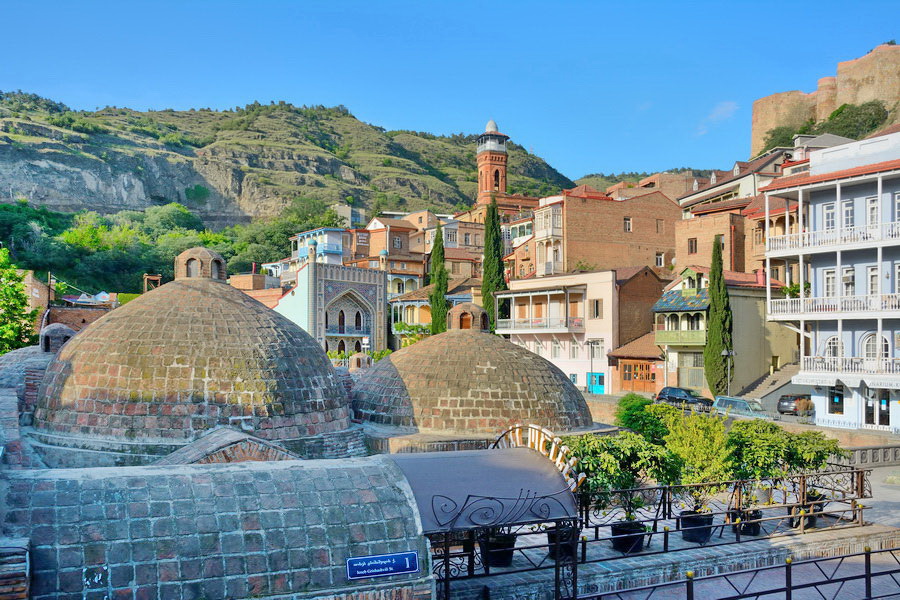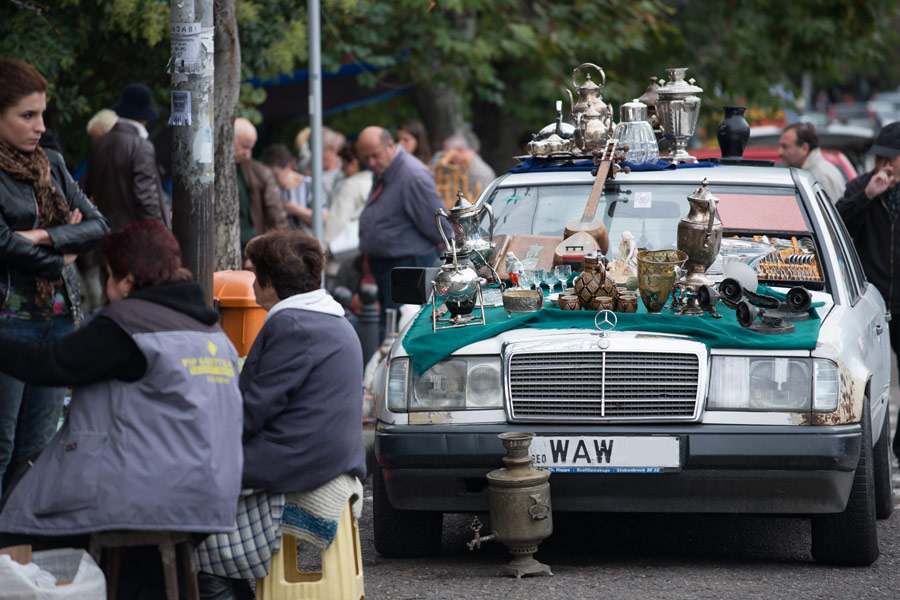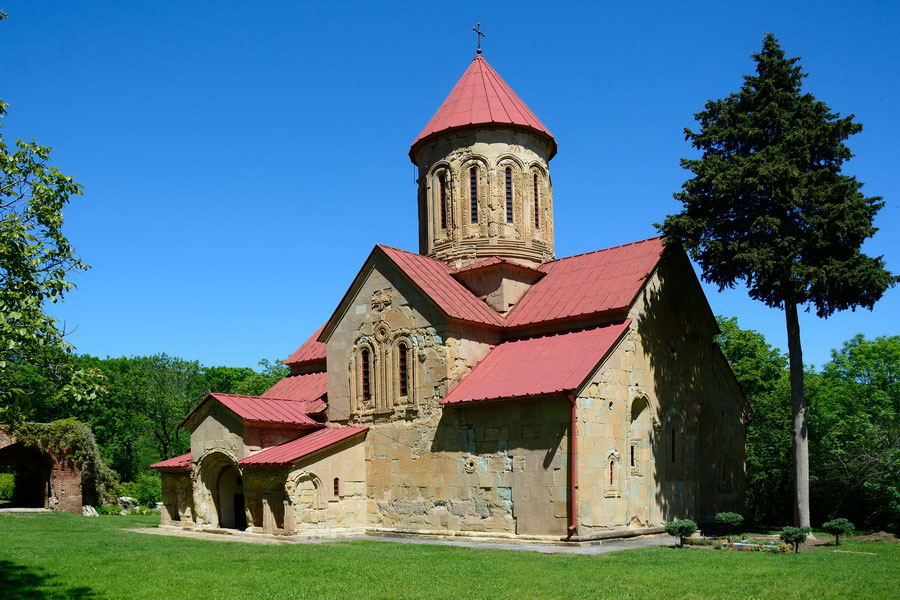Top 10 Attractions in Tbilisi

Our top 10 attractions in Tbilisi guide will show you the must-see landmarks in Georgia's capital. These spots are rich in culture and architecture, featuring everything from temples and museums to theaters, parks, and hidden gems. While some landmarks are iconic symbols of Tbilisi, others offer a deep dive into Georgian culture. Most are in the city center, but a few are on the outskirts or hidden about 20-30 km away.
Some sights in Tbilisi, like Narikala Fortress, are as ancient as Tbilisi itself, whereas others, such as the Peace Bridge, are modern additions from the early 21st century. Whether you're looking to relax or embark on a lengthy tour, these attractions are essential for a full Tbilisi experience. Keep in mind, one day isn’t enough to just scratch the surface. We recommend setting aside at least 2-3 days to explore Tbilisi's top 10 must-visit spots.
1. Narikala Fortress

Narikala Fortress stands as Tbilisi's oldest monument and a key highlight, earning its place on the list of the TOP-10 best sights of Tbilisi. Built in the 4th century AD, right when Tbilisi was founded, it has seen numerous expansions and reconstructions over the years. Its look today was shaped during the 7th and 8th centuries under Arab rule. Originally named Shuris-Tsikhe, or "enviable fortress" in Georgian, its current name, Narikala, means "little fortress" in Turkic, a name given during the Mongol era.
Now, it's Tbilisi's most-visited tourist attraction. You can reach it by climbing the stairs from the Old Town or taking a cable car from Rike Park. From the top, you get stunning views over Tbilisi: the charming quarters of the Old Town below and the new city stretching out beyond the Kura River.
2. Metekhi Church

Once upon a time, on the rocky shores of the Kura River, there was a castle complete with a monastery and church, serving as the residence for Georgian kings. But as time marched on, the castle fell to ruins during invasions, leaving only the small Metekhi Church standing today. Built in the 12th century, this church sits on the site of an earlier one and is the final resting place of Georgia's first martyr, Queen Shushanik Ranska.
Right in front of Metekhi Church, you'll find a little lookout with a view of Narikala Fortress across the river. There's also a statue of Tbilisi's founder, Vakhtang Gorgasali, making it a must-snap spot for Instagram.
3. The Bridge of Peace

The Bridge of Peace, a pedestrian path over the Kura River built in 2010, is a standout modern feature of Tbilisi. Easily seen from both the Narikala Fortress and Metekhi Church, this bridge was designed by the Italian Michele De Lucchi and shipped over from Italy in pieces. At 156 meters long, it links the Old Town with the contemporary Rike Park.
By day, the bridge's turquoise glass catches the eye, but it's at night that it truly shines, lit by 10,000 lamps. These lights flash a message in Morse code at night, spelling out the names of all the human body's chemical elements.
4. Sameba Cathedral

Georgia's churches are world-renowned, and within the TOP 10 attractions in Tbilisi, Sameba Cathedral is the cream of the crop as the country's tallest church, soaring up to 101 meters. Before Sameba, the Alaverdi Cathedral held the record at 50 meters. Officially known as the Holy Trinity Cathedral of Tbilisi, it covers a whopping 5,000 square meters and can hold over 15,000 people. Its golden dome is visible from anywhere in the city, and at night, its illuminated vaults make it look like a candle flame from afar. Sameba Cathedral is relatively new. Plans to start it in 1989 for a 2000 opening were delayed until 1995, and it wasn't finished until 2004. The complex includes the cathedral, the Patriarch of Georgia's residence, a men's monastery, a seminary, and more.
5. Mtatsminda

Mtatsminda is Tbilisi's highest point and a "holy mountain," popular for family trips and scenic walks. This spot is a hit with both locals and tourists, offering breathtaking city views. Whether you hike, drive, or take the funicular, you're in for a treat, especially if you walk down, stopping at little lookout points along the way.
At Mtatsminda, there's something for everyone: an amusement park, the 270-meter-tall Tbilisi TV tower, Turtle Lake, and the Pantheon. Turtle Lake is a summer hotspot with a beach, cafes, and evening music concerts. The Pantheon, where the famous Russian writer and diplomat Alexander Griboyedov is buried, has become a traditional resting place for notable Georgian and Russian figures.
6. Rezo Gabriadze Puppet Theater

Rezo Gabriadze was a multi-talented director, screenwriter, playwright, sculptor, and artist, shining brightly in the Georgian art scene. In 1981, he set up a puppet theater in the Old Town of Tbilisi, where he brought his own plays to life. His fame eventually reached across the globe. Sadly, Gabriadze passed away in 2021, but he left behind this unique theater as one of the modern symbols of Tbilisi.
In 1996, he opened the “Ne Goryuy!” (Don’t Be Sad!) café right in front of the theater, and in 2010, he added a whimsical clock tower to the site, where a puppet mini-show plays twice daily. Rezo himself decorated both the café and the tower, making the theater a must-see on our TOP-10 best sights of Tbilisi list.
7. National Museum of Georgia

This isn't just one museum but a network of over ten museums scattered across Tbilisi and other Georgian cities. The main building sits on Rustaveli Avenue in the heart of the capital, showcasing the most fascinating pieces of Georgian culture, history, and art from ancient times to the present. A day might not be enough to explore everything the National Museum of Georgia has to offer, from ancient artifacts to medieval Christian art and works by Georgian painters.
8. Tbilisi Sulfur Baths

Known since Tbilisi's founding, the warm sulfur springs might have even inspired the city's name, which means "warm." The iconic bathhouses we see today were built in the 17th-18th centuries and became a hit among famous visitors like Dumas and Pushkin, contributing significantly to the list of TOP 10 attractions in Tbilisi. Owning one of these baths was once a status symbol among the elite.
Each bath has its own character, with unique facades and interiors, making them standout Tbilisi attractions. The Orbeliani Bath, or the Blue Bath, is famed for its vibrant tile work, while the oldest, the Irakli Bath, has its own story. Still in use today, these baths draw locals and tourists alike for a dip in their healing waters.
9. Tbilisi Botanical Garden

A peaceful haven spanning 128 hectares, located just behind the Narikala Fortress in central Tbilisi. With its shaded paths, gazebos, waterfalls, and bridges, the Botanical Garden is perfect for those looking for a romantic stroll, a bike ride, or a nature photo op away from city noise.
Originally royal gardens, this area transformed into a large dendrarium and finally became a botanical garden in 1845. Now, it's home to over 3,500 plant species, including some rare finds, making it one of the oldest gardens in the region.
10. Dry Bridge Flea Market

This central Tbilisi flea market is a treasure hunter's dream. You could spend hours here, digging through a wide array of interesting finds from the Soviet era and Georgian crafts, including dishes, books, posters, badges, paintings, jewelry, and much more.
After independence, the Dry Bridge became a spot where Tbilisi's less fortunate could sell old belongings for some extra cash. Today, it's a vibrant marketplace of unique items from personal collections and old house finds, where sellers lay out their wares on cloths spread directly on the ground. The market is especially bustling on weekends, drawing crowds of tourists and locals alike. If you're looking for something unique to do in Tbilisi, the Dry Bridge market is your answer.
In the capital of Georgia, there's much more to see, with lots of stunning spots around the city too. Here are a few more gems that deserve a shout-out on the top 10 list of Tbilisi attractions:

Bethany – this quaint male monastery is about 35 km from Tbilisi, tucked away in the mountains. Built in the 12th century, its claim to fame are the incredible frescoes inside, known as the complex's greatest treasures. The monastery's past is a bit of a mystery, only really coming back to life in 1850 after years of neglect, and has since seen extensive restoration. If you’re keen to see some of the most impressive frescoes around, this is the place to go.

Ujarma – sitting 40 km from Tbilisi, this fortress town is remarkable for its sturdy stone walls and tower ruins. Established in the 3rd century AD, it was once home to Georgian royalty. Its golden era was during the 5th and 6th centuries, but it fell into decline after the Mongol invasions, eventually becoming enveloped by Georgia’s mountain forests. Luckily, a new road built in 2010 has made this incredible site accessible to everyone.

Martkopi Monastery is nestled 35 km from Tbilisi in a scenic forest on the slopes of the mountains. This significant Christian site was founded in the 6th century by Anton of Martkopi, one of the influential Assyrian fathers and pioneers of Georgian monastic life. It's now recognized as part of Georgia's cultural heritage. There's also a trail from the monastery leading to Saint Anton’s Pillar, where a short hike rewards you with stunning panoramic views.

